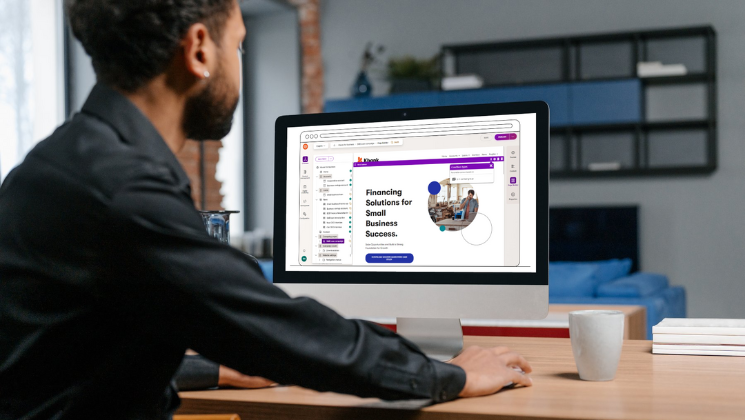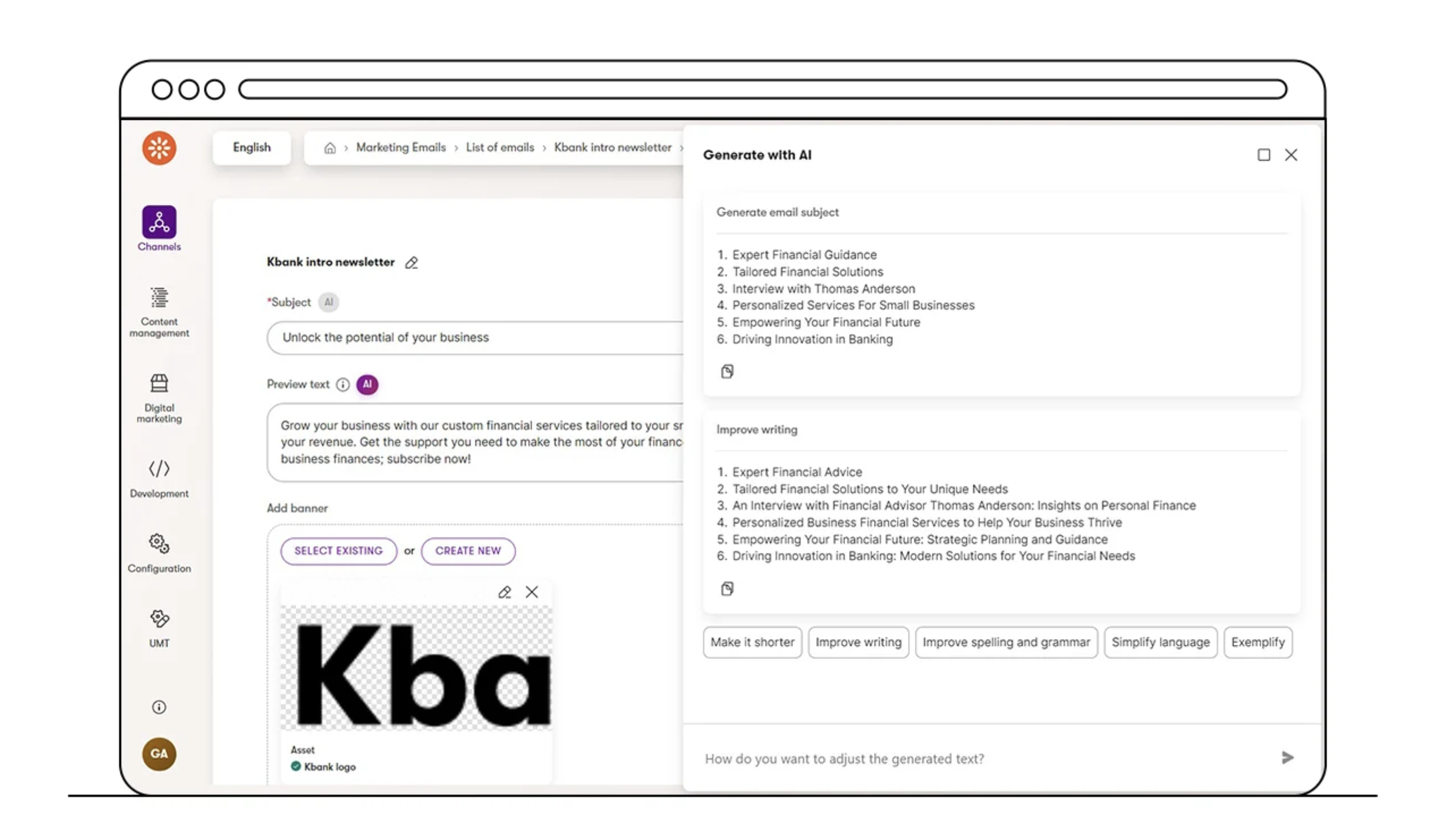Cost-Effective Alternative to Adobe Experience Manager
Today, a company’s website is more than just an online business card. It tells stories, connects with users, and generates revenue. Content Management Systems (CMS) are the basic platforms for achieving this. However, with budget cuts and rising costs, marketing teams are questioning their investments in high-end CMS or Digital Experience Platforms (DXP) like Adobe or Sitecore. Is there a way to maintain top-tier website management without breaking the bank? The answer might surprise you.

Evaluating the need for CMS alternatives
Content management systems enable users to create, manage, and evaluate digital content on a website. They cover content publishing, making it easier for teams to collaborate and keep the website up to date. A Digital Experience Platform (DXP) builds on a CMS by integrating tools for personalization, analytics, and marketing automation, ensuring a seamless and cohesive digital experience across various touchpoints.
Users of Adobe Experience Manager (AEM), usually enterprise-level companies, appreciate its powerful CMS capabilities and robust marketing features. It comes in handy when marketers need to manage customer experiences across multiple countries/languages and various digital channels.
But why look for an alternative? Let’s face it, just like any platform out there, AEM has some drawbacks. When talking to clients, that’s the reality we see:
- Your company has invested millions in licenses, purchased many complex features and now has a solution which is causing headaches to your IT and marketing teams when trying to achieve basic tasks.
- Steep learning curve. Even after several years, your team doesn’t know the platform well enough and uses only half of the features.
- The extensive set of features raises the overall complexity of AEM causing even simple changes to be dependent on your development team or platform expert.
In short, AEM's high Total Cost of Ownership (TCO) and complexity can be barriers to efficient use. Businesses should consider AEM alternatives and compare them to Adobe’s products. After all, a penny saved is a penny earned.
Adobe vs Kentico: UX, TCO, Integrations
Xperience by Kentico (XbK) is a comprehensive digital experience platform (DXP) that empowers businesses with robust content management, digital marketing, and commerce capabilities.
With low-code/no-code tools, it enables marketing teams to create and manage engaging customer experiences without heavy reliance on developers.
Kentico has evolved from the first few versions released in 2008 to become a robust platform offering immense value. The current version, Kentico Xperience 13, is a cloud-native platform known for its flexibility, scalability, and affordability. This makes it a future-proof solution that supports business growth and provides a significant return on investment (ROI).
Although AEM previously had a stronghold on the market, G2 and Gartner now highlight XbK as a worthy AEM CMS competitor.
XbK offers a suite of features covering most of the functionalities offered by AEM.

These include advanced content management tools, multichannel marketing capabilities, seamless third-party integrations, and built-in analytics, making it an excellent option for businesses looking to re-platform from Adobe.
Let’s take a closer look at how these two products measure up against each other in key areas: user experience, TCO and customer support.
Ease of use
Complex CMS platforms make it difficult for businesses to deliver the best customer experiences. For marketers specifically interested in a CMS for its ease of use, Adobe’s DXP is not the best option because the product is difficult to set up and use.
For context, “complex usability” is the biggest drawback of the platform according to feedback provided by Adobe users on G2.
Also, Gartner points out in its DXP Magic Quadrant report of March 2023 that “Adobe has a very complex suite of Digital Experience management tools requiring considerable technical resources to deliver, with an extremely steep learning curve, specialized skill set and training, and extensive implementation timelines.”
So, it is very easy to do things the wrong way.
In contrast, Kentico Xperience offers a user-friendly interface and What-You-See-Is-What-You-Get (WYSIWYG) editor that simplifies content creation and website management. It also incorporates drag-and-drop functionality and customizable page templates to enhance usability, allowing marketing teams to be more efficient and independent of developers.

Cost efficiency
One of the primary advantages of Kentico Xperience over AEM is its Total Cost of Ownership (TCO).
AEM licensing fees are quite high. Adobe is also not very transparent about the actual cost. The actual cost of a license is custom and depends on several factors – the choice of specific product or module, number of people using it, service level agreement, etc. In addition, AEM’s customization and integration add up to the initial costs, bringing TCO through the roof.
Kentico offers a more affordable alternative. Their pricing plans are spelt out on their website and are considerably lower than those of Adobe. However, Kentico does not sacrifice affordability for quality.
In fact, by re-platforming from AEM to Kentico, you can have more than 90% of Adobe’s features – plus Xperience’s unique features - for just 40% of the cost. That makes Kentico Xperience the true definition of cost-effective.
Openness to integrations
Xperience by Kentico is a hybrid headless DXP combining the advantages of a traditional solution with a rich API.
What this rich API means for users is there is freedom to choose the components or solutions you want to integrate with your DXP, regardless of the vendor. Kentico wants you to stay in control of your architecture, so they empower you with an API that facilitates easy integration.
This is in sharp contrast to AEM. Because Adobe tries to keep customers within its ecosystem, third-party integrations with AEM are far from seamless. This inevitably leads to a vendor lock-in, which can result in higher costs and limited flexibility for businesses looking to integrate with other tools or switch platforms in the future.
From AEM to Kentico: international manufacturer success story
To put into perspective what the migration process from AEM to Kentico is like and the potential benefits, let’s look at this real-world case study of a client we helped migrate.
Client Profile: An international manufacturer of adhesives and sealants, part of a larger group distributing consumer goods globally.
Migration Reasons: High costs and unclear additional benefits of AEM. The client spent over €200,000 on AEM and wanted a cost-effective alternative.
They needed an option that would allow critical functionalities like WYSIWYG editing, image library management, and localization of pages to different languages.
They also needed the CMS to integrate with their Product Information Management (PIM) software, commerce platform, and CookieBot for efficient website management. Kentico Xperience offered all these features for a total cost of €80,000.
Migrating this client from Adobe to Kentico took 9 months including content migration and involved five sites and thousands of pages. The migration costs were also affordable and the TCO was equal to the 3-year license price of Adobe Experience Manager.
For this client, the key achievements of this migration process included:
- TCO decrease by 60%
- Easier page creation with the page builder, widgets, and drag-and-drop repositioning
- Efficient creation of categorized articles, tutorials, and FAQs
- Simple automatic localization into any language
- Faster, reliable import of product data from PIM
- Dynamically created product pages customized by the brand and local marketing department
Addressing migration concerns
Migrating from one CMS platform to another can raise concerns about costs, employee adoption, compatibility with existing tech, vendor support, and data security.
Kentico addresses these concerns with a secure platform, high-quality support services, and ease of use, promoting employee adoption. Xperience 13 is highly compatible with other software and scalable, allowing for future growth and changes.
Migration costs might be high initially, but Kentico pays for itself over time with reduced licensing fees and TCO. A trusted implementation partner can guide you through the migration journey, ensuring it goes smoothly.
The website migration process is complex and often can be painful, but it doesn't have to be. To make things easier, we've put together a free migration guide. It's packed with handy tips to keep your website's SEO healthy and visitors happy during the changeover.
A compelling choice for cost-effective re-platforming
Migrating from Adobe Experience Manager (AEM) to Kentico Xperience offers substantial benefits, making it a compelling choice for businesses seeking to optimize their DXPs.
Key Benefits:
- Save up to 40% on license costs while retaining most essential features.
- User-friendly interface, efficient content management capabilities, and robust security features.
- Successful migration case highlights the potential for cost-effective re-platforming without sacrificing functionality.
Interested in learning more about this successful migration and how it can benefit your business? Let's talk to discover how we can help you achieve similar results. Contact us for more information and to discuss your specific needs.
Author

Adam Böhm
Division Director at ACTUM Digital. You can find me on LinkedIn